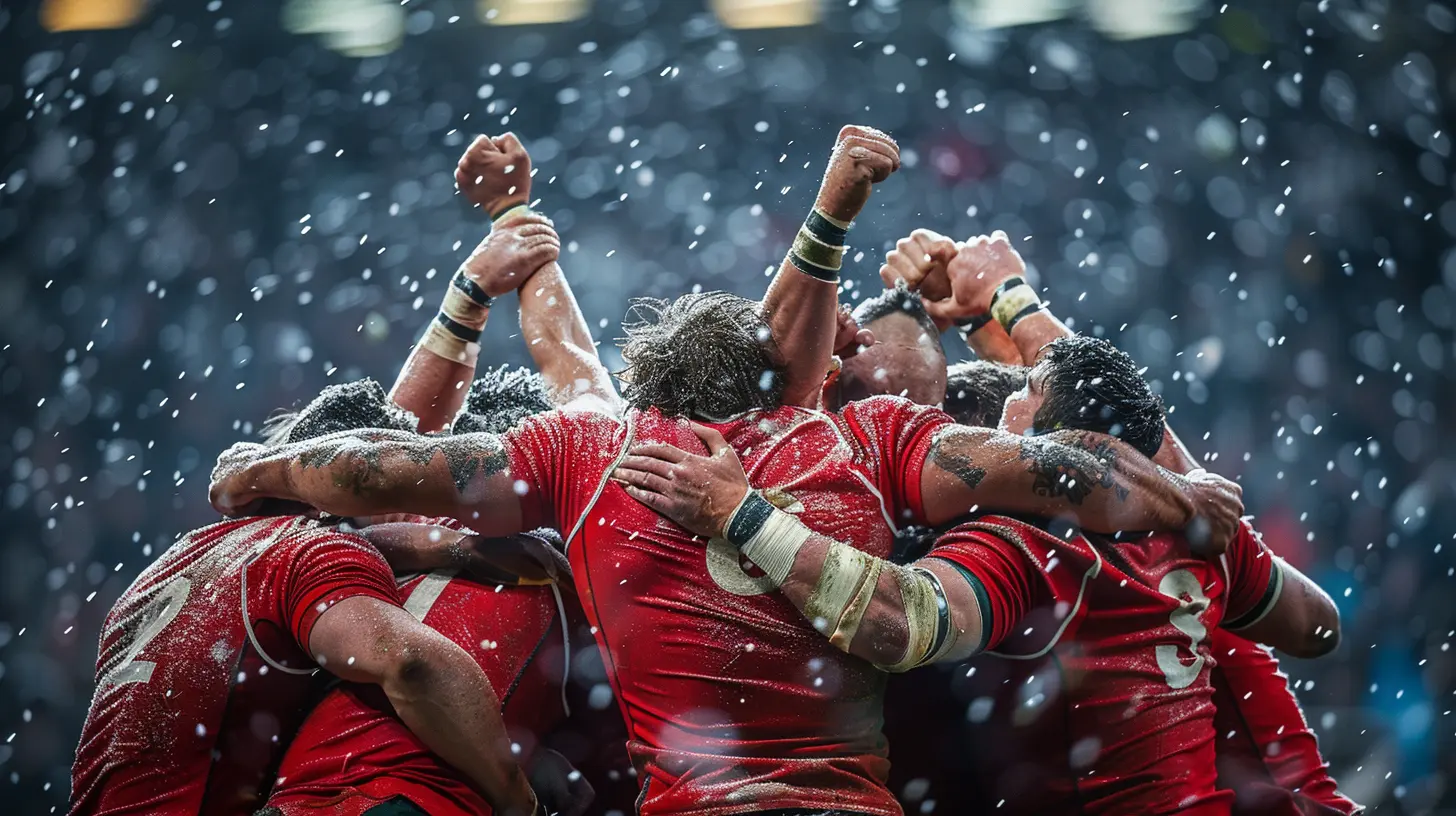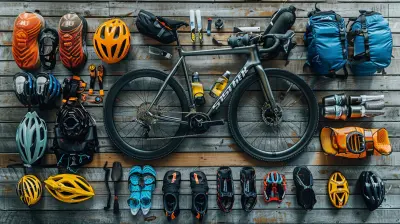The Unsung Heroes of Rugby: Celebrating the Forward Pack
10 June 2025
Rugby is a game of skill, strategy, and brute strength. While the flashy backs and skillful wingers often steal the headlines with their dazzling runs and try-scoring antics, the real backbone of any great rugby team lies in the forward pack. These warriors of the game do the hard yards, battle in the trenches, and lay the foundation for every attacking move. Without them, the game simply wouldn’t function.
So today, let’s give credit where it's due and shine a light on the unsung heroes of rugby—the forward pack. 
Understanding the Role of the Forward Pack
In rugby, the team is divided into two main units: the forwards and the backs. The forwards are the first eight players in the lineup and are responsible for the physical aspects of the game—scrummaging, rucking, mauling, and securing possession. They don’t always get the glory, but they are the true workhorses of any team.The Breakdown of the Forward Pack
The forward pack consists of eight players, split into two key groups:- The Front Row (Props & Hooker)
- The Second Row (Locks)
- The Back Row (Flankers & Number 8)
Each position comes with its own unique set of responsibilities, and together, they make up the engine that powers a rugby team forward. 
The Front Row: The Backbone of the Scrum
Props (Loosehead & Tighthead)
If rugby were a battle, props would be the frontline soldiers. Their job is to anchor the scrum, absorb immense pressure, and provide stability. The loosehead prop (No. 1) and tighthead prop (No. 3) are crucial in contests of strength, binding together to give their team a dominant platform in scrums and breakdowns.But it doesn’t end there. Modern props are expected to be mobile, carry the ball with purpose, and even make tackles like a back-row forward. A top-class prop isn’t just strong; they’re also agile, explosive, and technically sound.
Hooker (No. 2)
Hookers are the linchpins of the scrum. Their role is simple yet crucial—hooking the ball back in the scrum and throwing accurate lineout deliveries. A great hooker needs to be aggressive, highly skilled, and fearless in contact. They often play a hybrid role, combining the strength of a prop with the mobility of a flanker.More than just a set-piece specialist, modern rugby hookers contribute heavily in open play. They make tackles, carry the ball with force, and even chip in with the occasional try. 
The Second Row: The Towers of Strength
Locks (No. 4 & No. 5)
If there’s one position that epitomizes raw power in rugby, it has to be the locks. These towering giants form the backbone of the scrum, providing immense pushing power. They are also aerial specialists in lineouts, contesting and securing possession from thrown balls.Think of them as the skyscrapers of the team—always towering over the opposition, dominating the set pieces, and carrying the team forward. They’re also workhorses in open play, making tackles, hitting rucks, and driving their team up the field.
Locks don’t always bask in the limelight, but without their grunt work, a team simply won’t function. 
The Back Row: The Dynamic Playmakers
Flankers (No. 6 & No. 7)
Flankers are the relentless warriors of rugby. They’re the first to tackle, the first to hit the breakdown, and the ones who constantly disrupt the opposition. There are two types of flankers:- Blindside flanker (No. 6): Typically bigger and more physical, they focus on dominating the contact area.
- Openside flanker (No. 7): Quick, agile, and known for their ability to force turnovers and steal possession.
Great flankers are energetic, fearless, and always seem to be in the right place at the right time. They’re the kind of players that every coach wishes they had two of on the field.
Number 8 (No. 8)
The Number 8 is the ultimate hybrid of forward and back. They are strong ball carriers, explosive runners, and defensive anchors. They link the forwards and backs by taking charge of possession at the base of the scrum and acting as a battering ram when the team needs go-forward momentum.Some of rugby’s greatest players have worn the No. 8 jersey, bringing a unique blend of power and skill to the game. They’re the unsung orchestrators who dictate a team’s rhythm from the back of the scrum.
Why The Forward Pack Deserves More Recognition
It’s easy to focus on wingers scoring tries or fly-halves delivering pinpoint kicks, but without the graft of the forward pack, none of those opportunities would exist.They Set the Platform
A strong forward pack dictates the pace of the game. They provide the momentum, create space, and ensure their backs have clean ball to work with.They Dominate the Set Piece
Scrummaging and lineouts might not always be glamorous, but they are the foundation of rugby. If your forward pack isn’t firing, your team is going to struggle—simple as that.They Do the Dirty Work
Winning rugby games isn’t just about flair; it’s about grit. The forward pack is tasked with securing rucks, making tackles, and grinding through the tough yards. They don’t get the plaudits, but they are the heart and soul of every rugby match.They Can Be Game Changers Too
Forwards aren’t just there to do the grunt work. Modern rugby demands that they be just as skilled with the ball in hand as the backs. We’ve seen incredible tries from props, stunning passes from locks, and outrageous offloads from flankers. The game has evolved, and the forward pack is now more dynamic than ever.Final Thoughts
It’s time we showed a little more love to the forward pack. They are the real workhorses, the enforcers, and the glue that holds a rugby team together. Without them, the wingers wouldn’t be scoring, the fly-halves wouldn’t be dictating play, and the team wouldn’t have a chance of winning.So next time you watch a rugby match, take a moment to appreciate the unsung heroes who are putting in the hard yards. The forward pack may not always get the glory, but they are the ones who make everything possible.
all images in this post were generated using AI tools
Category:
RugbyAuthor:

Ruben McCloud
Discussion
rate this article
3 comments
Greta Gray
Great tribute to rugby’s vital forwards!
June 22, 2025 at 11:15 AM

Ruben McCloud
Thank you! I'm glad you enjoyed the tribute to the essential role of forwards in rugby.
Sylvan Torres
Strength in unity prevails!
June 16, 2025 at 12:21 PM

Ruben McCloud
Absolutely! The forward pack exemplifies teamwork and resilience, proving that unity truly drives success on the rugby field.
Deborah Patel
Great piece! The forward pack truly deserves more recognition and appreciation.
June 13, 2025 at 3:09 AM

Ruben McCloud
Thank you! I'm glad you enjoyed it—highlighting the forward pack's contributions is so important!



